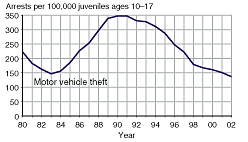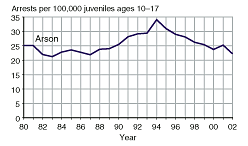Most arrested juveniles were referred to court
In most states, some persons under age 18 are, due to their age or by statutory exclusion, under the jurisdiction of the criminal justice system. For arrested persons under age 18 and under the original jurisdiction of their state’s juvenile justice system, the FBI’s UCR Program monitors what happens as a result of the arrest. This is the only instance in the UCR Program in which the statistics on arrests coincide with state variations in the legal definition of a juvenile.
In 2002, 18% of arrests involving youth eligible in their state for processing in the juvenile justice system were handled within law enforcement agencies, 73% were referred to juvenile court, and 7% were referred directly to criminal court. The others were referred to a welfare agency or to another police agency. The proportion of arrests sent to juvenile court has increased gradually from 1990 to 2002 (from 64% to 73%). In 2002, the proportion of juvenile arrests sent to juvenile court was similar in cities (72%), suburban counties (74%), and rural counties (72%).
In 2002, juvenile arrest rates for murder, forcible rape, and robbery were at or near their lowest levels since at least 1980; the same was not true for the juvenile arrest rate for aggravated assault
Murder
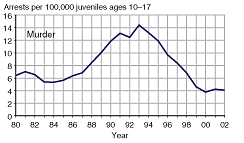
Forcible Rape

Robbery
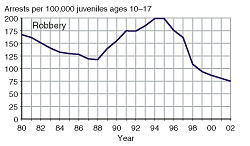
Aggravated Assault
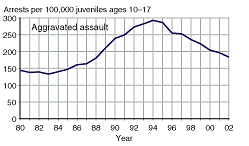
Juvenile arrest rate trends for the four offenses that make up the Property Crime Index show very different patterns over the 1980–2002 period
Burglary
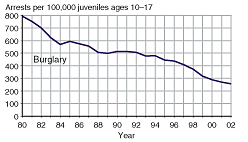
Larceny-Theft
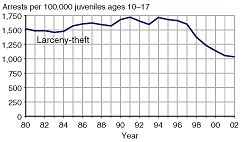
Motor Vehicle Theft
Arson
| Previous | Contents | Next |
|
|
|
| Juvenile Arrests 2002 | |
